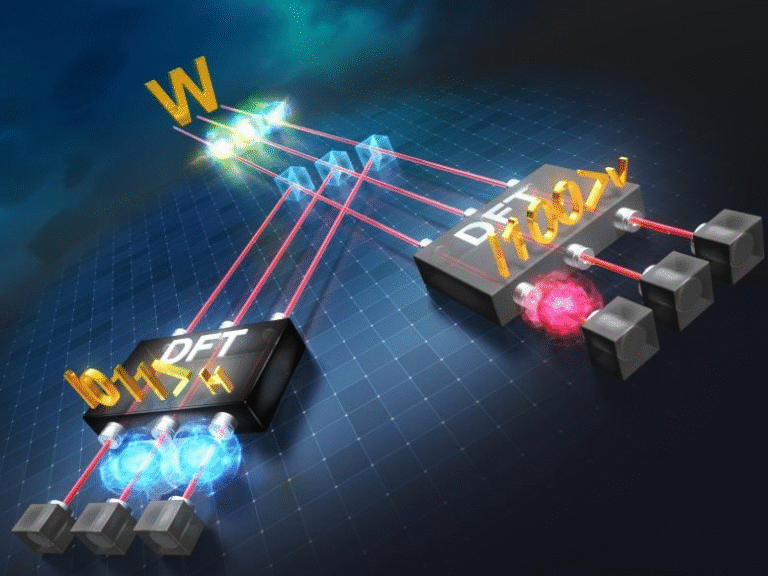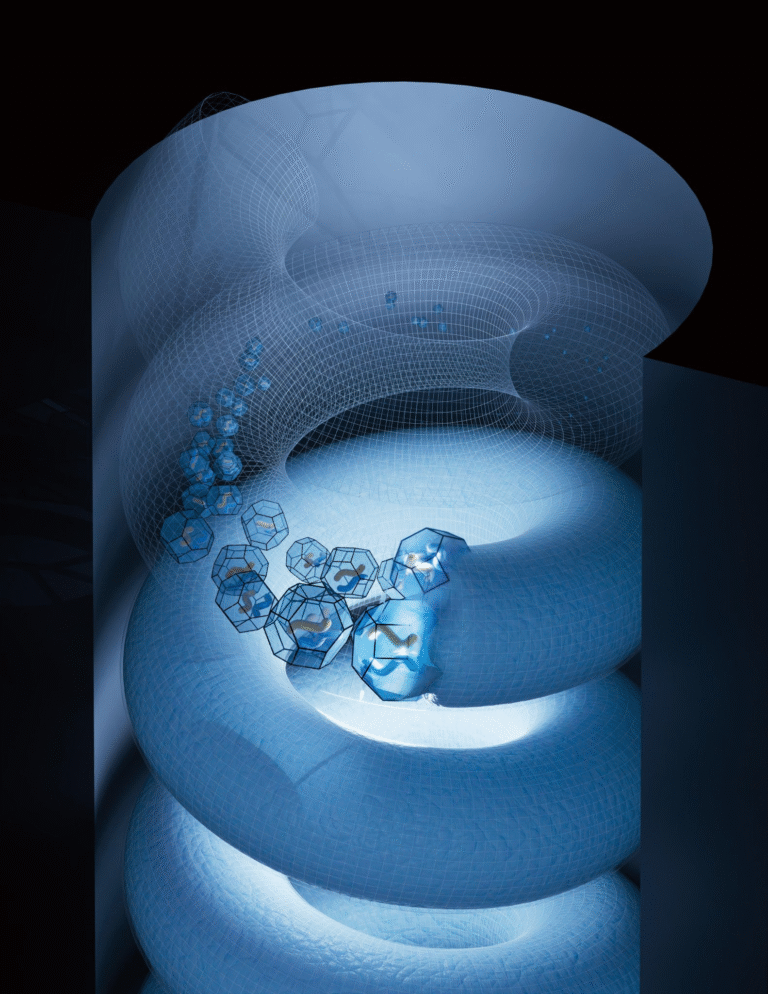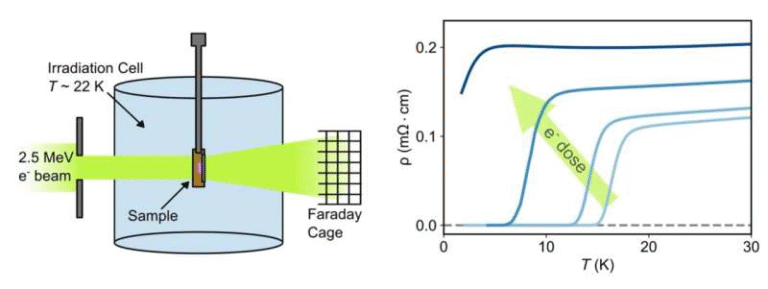Physicists Reveal New Clues About How Gold and Heavy Elements Are Made in the Cosmos

Physicists from the University of Tennessee, Knoxville, working in collaboration with CERN’s ISOLDE facility and other research institutions, have made three groundbreaking discoveries that shed new light on how elements like gold and platinum are formed in the universe. The research, published in Physical Review Letters (October 2025), explores the nuclear processes behind the creation of heavy elements through the rapid neutron-capture process, or r-process, and provides the first-ever detailed measurement of a phenomenon known as beta-delayed two-neutron emission.
This experiment not only deepens our understanding of the nuclear reactions occurring in stellar explosions but also forces scientists to rethink existing theoretical models about how unstable nuclei behave.
Understanding How Gold Is Born in the Universe
Gold, platinum, and many other heavy elements don’t originate from ordinary stars. They’re formed during extreme cosmic events such as supernova explosions or neutron star collisions. In these cataclysmic environments, a nucleus can rapidly capture neutrons one after another before it has time to decay — this chain reaction is known as the r-process.
But the journey of a nucleus during the r-process is complex. After accumulating too many neutrons, it becomes unstable and decays into more stable nuclei through processes like beta decay, often releasing one or more neutrons in the process.
These reactions are critical in determining which elements and isotopes end up being produced in the universe. However, studying these events in detail has been nearly impossible because the nuclei involved are extremely short-lived, and the reactions happen under extreme conditions that can’t easily be reproduced in laboratories.
That’s what makes this new research from the University of Tennessee and CERN so significant — it managed to directly study one of these elusive nuclei and its decay process for the first time.
The Experiment: Following the Trail of Indium-134
The star of this experiment is a very neutron-rich isotope called indium-134 (In-134). It’s an exotic nucleus located far from stability on the nuclide chart, meaning it has far more neutrons than ordinary indium. This isotope lies directly along the r-process path, making it a perfect candidate for understanding how heavy elements form.
Producing In-134 in sufficient quantities is a massive challenge. The team relied on the ISOLDE Decay Station at CERN, which specializes in generating rare isotopes using high-energy proton beams and then separating them with laser-ionization technology to ensure purity.
Once enough In-134 nuclei were synthesized, the researchers studied how they decayed. When indium-134 undergoes beta decay, it transforms into tin-134 (Sn-134) and can populate various excited states in tin-134, tin-133 (Sn-133), and tin-132 (Sn-132). These excited nuclei can then emit neutrons as they “cool down.”
To capture these fleeting neutron emissions, the University of Tennessee team designed and built a specialized neutron detector — an advanced array capable of distinguishing between single and double neutron emissions and even measuring their energy.
Discovery 1: The First Measurement of Beta-Delayed Two-Neutron Emission
One of the study’s headline achievements was the first-ever measurement of neutron energies following beta-delayed two-neutron emission (β2n).
This process occurs when a highly unstable nucleus undergoes beta decay and then emits two neutrons almost simultaneously. Such reactions only happen in exotic, short-lived nuclei, making them extremely rare and difficult to study.
Before this work, no one had successfully measured the neutron energies in β2n emission — researchers could only detect that multiple neutrons had been released, not their energy distributions.
By tracking the emitted neutrons from In-134’s decay, the team was able to determine their energy spectra and confirm that the decay occurred through a sequential two-neutron emission process — one neutron emitted after the other, not both at once.
This discovery provides critical data for refining nuclear models, since neutron emission energies and timing give insight into the internal structure and stability of these nuclei. It also opens a new field of research into beta-delayed multi-neutron emissions, an essential component of how the r-process operates in astrophysical environments.
Discovery 2: The Long-Sought Neutron State in Tin-133
The researchers also achieved the first observation of a single-particle neutron state in tin-133 (Sn-133) that scientists had been searching for over two decades.
When indium-134 decays, it can leave its “shadow” in tin-133 — meaning the resulting nucleus retains some memory of its original state before decay. By analyzing the neutron emissions and the energies involved, the team identified the long-theorized i13/2 single-particle neutron orbital in tin-133.
This neutron state lies near one of the most important regions in nuclear structure physics: the magic number 82 for neutrons, where nuclear shells are filled and the nucleus becomes particularly stable. Tin-132 (Z=50, N=82) is known as a doubly magic nucleus, meaning it has complete proton and neutron shells. Studying the nearby isotope tin-133 allows physicists to see how the structure evolves as one moves away from this magic configuration.
Finding the i13/2 state not only completes the understanding of tin-133’s structure but also provides a benchmark for theoretical nuclear models that describe nuclei near the neutron magic number.
Discovery 3: Non-Statistical Population of the Neutron State
The third major finding in this study was the non-statistical population of the newly observed i13/2 neutron state.
Normally, when nuclei decay, the resulting excited states are populated according to statistical probabilities — like stirring a pot of soup, where energy is distributed more or less randomly among available states. But in this case, the researchers found that the decay of In-134 populated the i13/2 state in a way that did not follow statistical expectations.
This means that traditional models, which assume a random energy distribution after decay, don’t hold true for such exotic, neutron-rich nuclei.
Instead, something unique is influencing the decay pattern — perhaps the nuclear structure or the precise sequence of neutron emissions. This observation challenges long-standing assumptions and signals that new theoretical frameworks are needed to describe these nuclei accurately.
Why These Discoveries Matter
The three findings together reshape how scientists think about the r-process and the creation of heavy elements in the cosmos.
Accurate models of nuclear decay are essential for astrophysical simulations. When researchers model how neutron star mergers or supernovae create elements, they rely on branching ratios — the probabilities of one-neutron or two-neutron emissions, for instance. If these probabilities are off, the predicted abundances of elements like gold or platinum could be significantly wrong.
The new data from this experiment show that existing models overestimate the population of certain states, like the i13/2 orbital, suggesting that beta-delayed two-neutron emission may happen less frequently or differently than previously thought.
This discovery could help refine r-process nucleosynthesis models, improving predictions of how much gold, platinum, and other heavy elements are synthesized during cosmic events.
A Collaborative Effort
This ambitious experiment was the result of collaboration between multiple institutions. The research was led by Professor Robert Grzywacz, Associate Professor Miguel Madurga, and Research Associate Monika Piersa-Silkowska from the University of Tennessee, along with graduate students Peter Dyszel and Jacob Gouge.
The team also included Research Assistant Professor Zhengyu Xu, whose earlier work on data analysis methods was crucial for interpreting the results. Graduate student Peter Dyszel, who joined the research group in 2022, was the first author of the paper. He played a central role in building components for the neutron detector array, setting up electronics, testing data acquisition systems, and analyzing the experimental data.
Their collaboration with scientists at CERN’s ISOLDE facility made it possible to produce enough indium-134 nuclei to carry out this intricate study. The ISOLDE facility provided both the radioactive beams and the laser-separation technology needed to ensure sample purity.
What Is Beta Decay and Why Is It Important?
Beta decay is one of the most common forms of radioactive decay. It occurs when a neutron transforms into a proton, emitting an electron (beta particle) and an antineutrino. This process changes the element into one with a higher atomic number.
In neutron-rich nuclei — like indium-134 — beta decay helps the nucleus move toward stability. But sometimes, the decay is accompanied by the emission of one or more neutrons. These beta-delayed neutron emissions are critical for shaping how isotopes evolve during the r-process.
In cosmic environments, the timing and number of emitted neutrons influence the final composition of the elements that form. Understanding beta-delayed multi-neutron emissions is therefore essential to explaining why the universe contains the specific mix of heavy elements we observe today.
Broader Implications for Astrophysics
The implications of this research go beyond nuclear physics — they touch directly on cosmic chemistry.
When neutron stars collide, they eject massive amounts of neutron-rich matter into space. The r-process rapidly builds up heavy nuclei in that material. Once the neutron bombardment stops, these unstable nuclei begin to decay, emitting beta particles and neutrons, and ultimately settling into stable forms like gold, platinum, and uranium.
By improving our understanding of how exotic nuclei like indium-134 decay, physicists can make more accurate predictions of how much of each element is produced in these stellar collisions. This helps explain why gold is rare but not impossibly so, and why some stars contain higher amounts of heavy elements than others.
The Bigger Picture
This experiment is a major step toward mapping the unknown regions of the nuclear chart, especially for isotopes that can’t be found naturally on Earth.
It also demonstrates the growing power of experimental nuclear physics — combining state-of-the-art detectors, advanced data analysis, and international collaboration to answer fundamental questions about the universe’s origin.
As scientists continue to explore the r-process and the boundaries of nuclear stability, new discoveries like these will help connect the dots between the microcosmic world of atomic nuclei and the grand cosmic story of how the elements of our universe came to be.
Research Reference:
P. Dyszel et al. First β-Delayed Two-Neutron Spectroscopy of the r-Process Nucleus 134In and Observation of the i13/2 Single-Particle Neutron State in 133Sn, Physical Review Letters (2025). https://doi.org/10.1103/l24v-5m31





